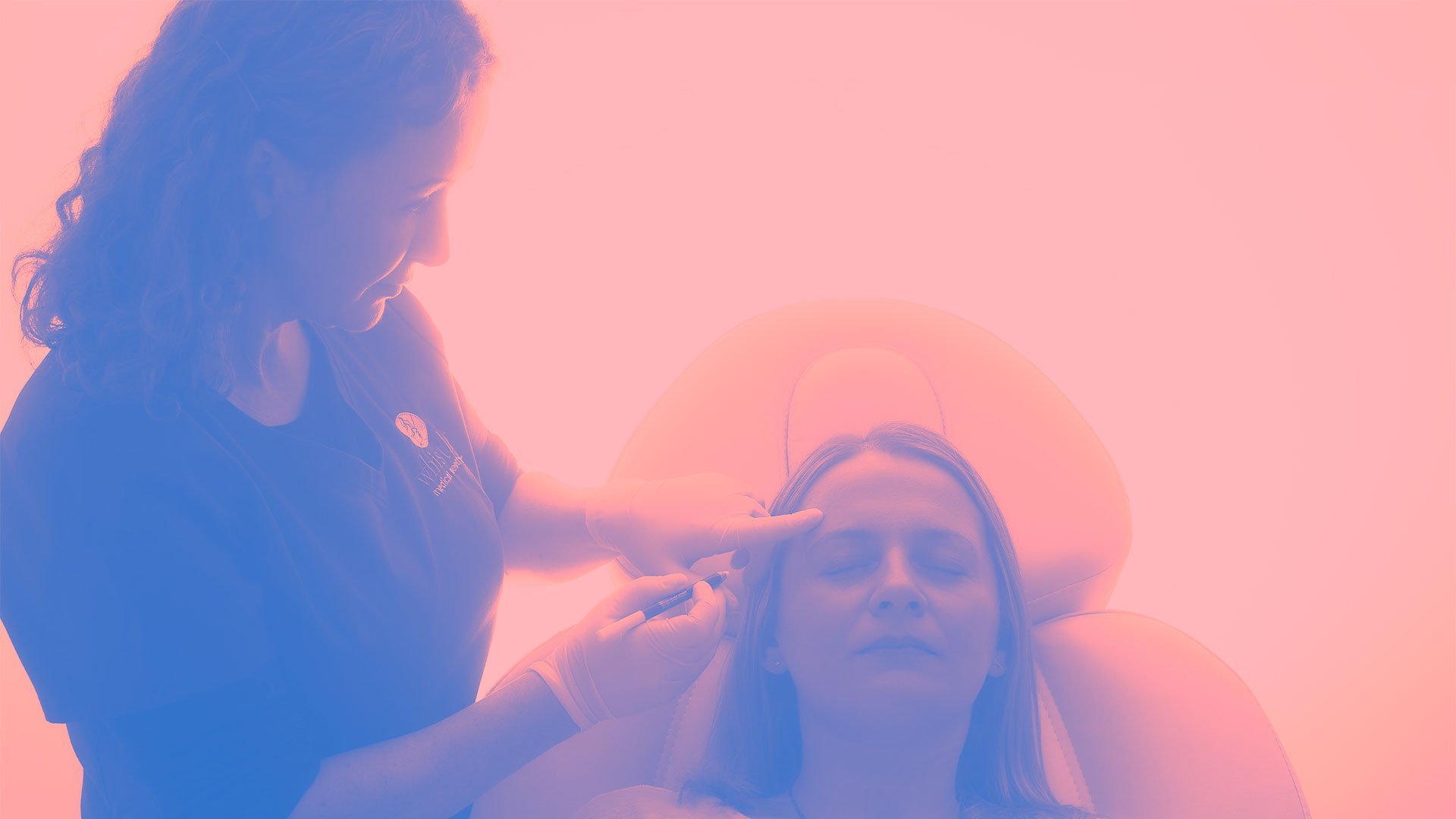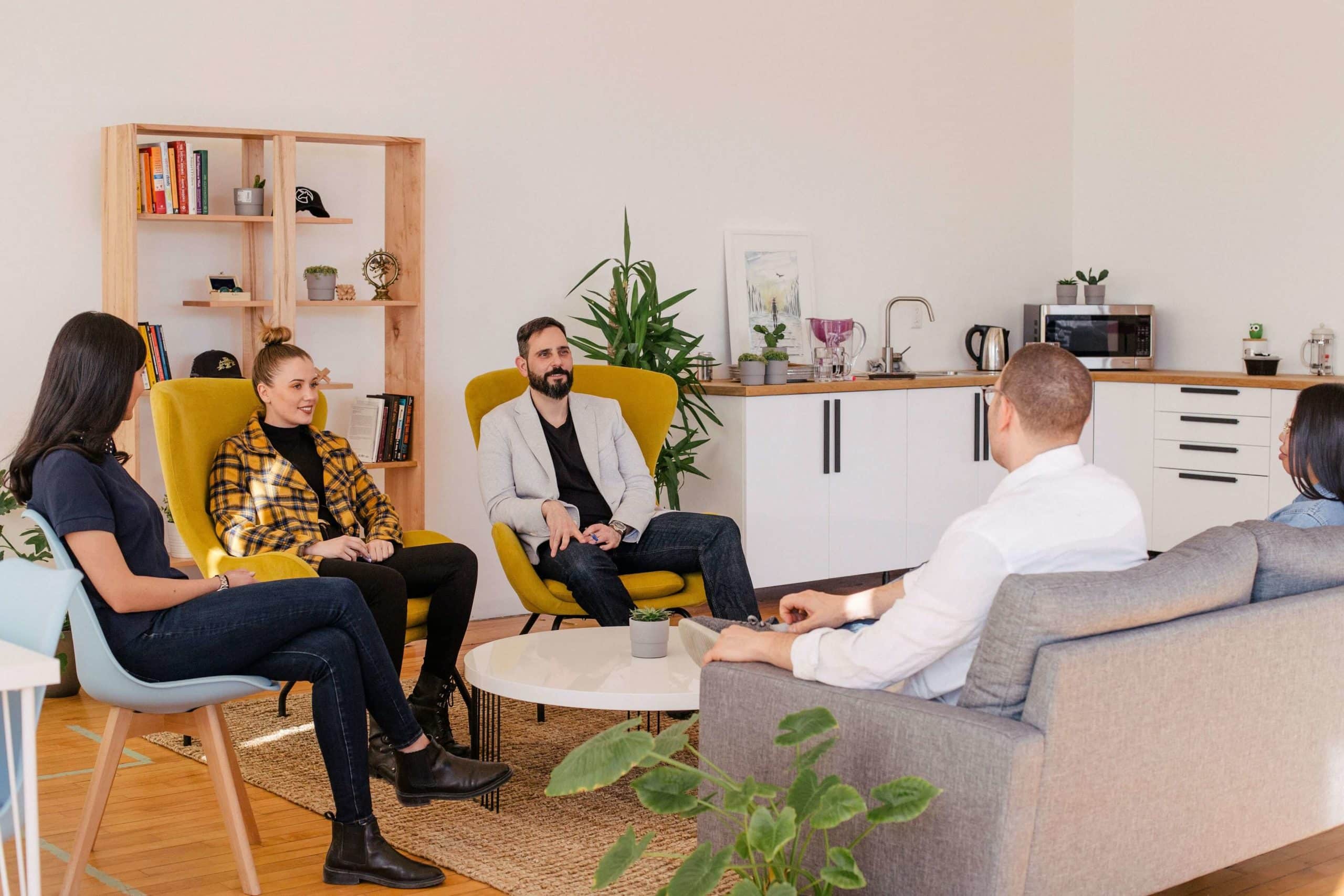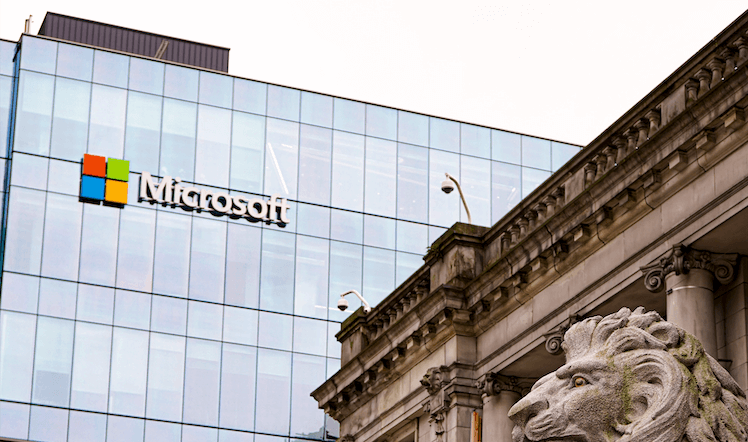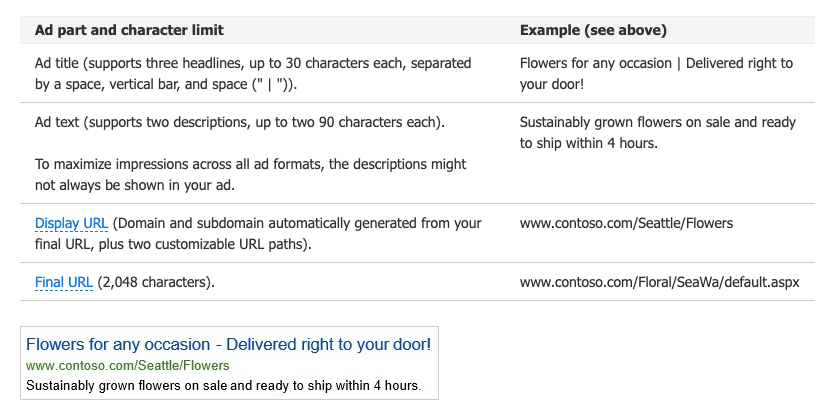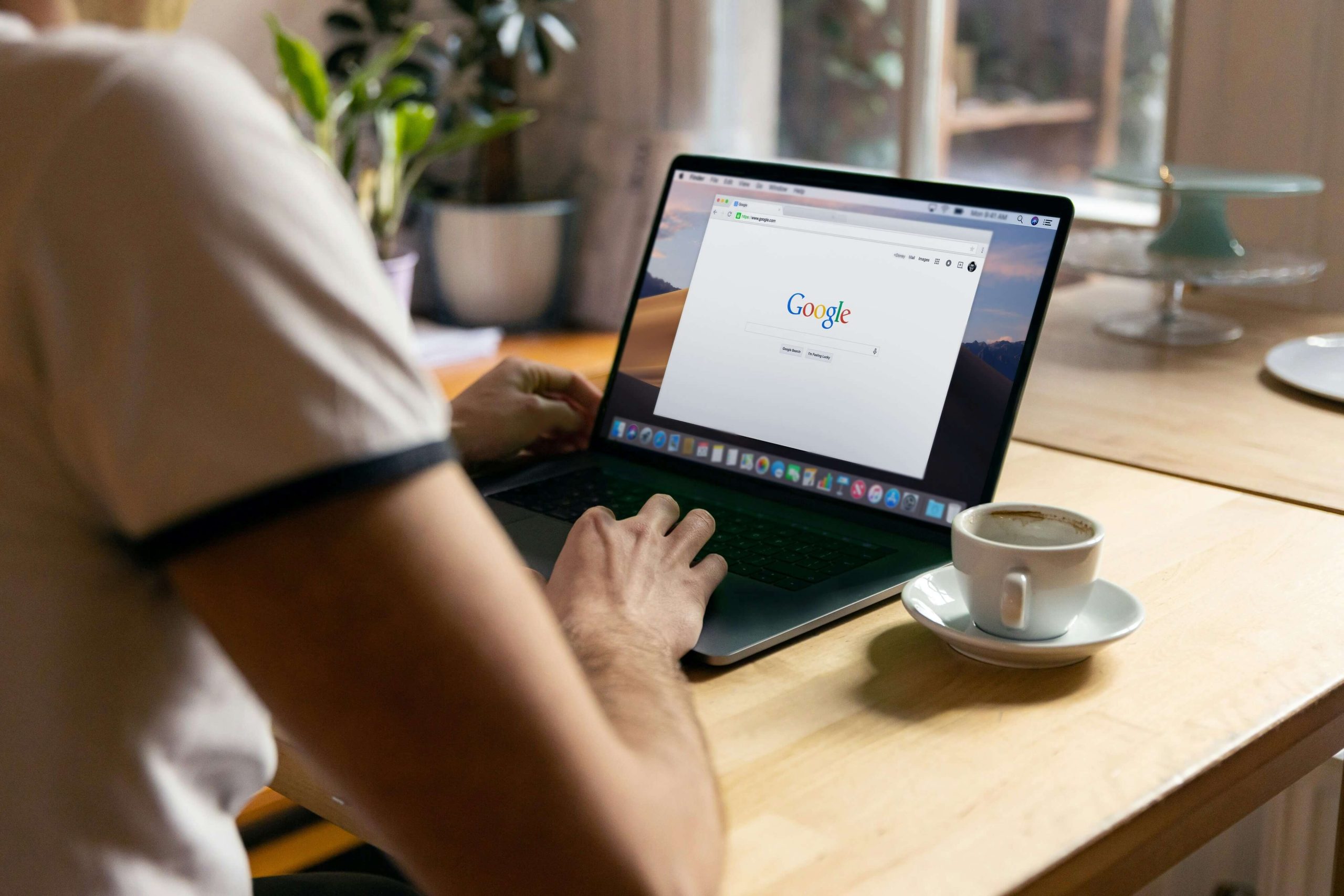Microsoft vs Google Ads — it’s an online ad titan showdown!
Google Ads have always been the king of PPC.
However, in 2022, marketers had spent a total of $11.59 billion on Microsoft Advertising (or previously known as Bing Ads). This means we should not underestimate Microsoft presence in the advertising game!
In this guide, we’ll take a look at what PPC is, then take a look at the ad options between Microsoft and Google, the user demographics, and more. You’ll be able to make an informed decision on what works best for your business and generate website traffic and leads with ease!
Let’s get this showdown on the road.
Here’s the outline, feel free to skip to a section that interests you the most.
What is Pay-Per-Click (PPC)?
- Relevancy: how close your ad and landing page align with search queries
- How your bid compares to your competitors’ bids in the online advertising auction
- Historical ad performance and Click-Through Rate (CTR)
A combination of these factors will determine your chance of “winning” the top ad position.
Note that there is no set price when it comes to PPC. It depends on your industry, seasonality (e.g., Christmas season), trends (eg. COVID-19), location keyword competitiveness, and the lifecycle of your customer.
We discussed Google and Bing Ads in the Paid Search section of our blog, “How to Choose the Right Advertising Channel”. Yet, both of these ad platforms have PPC options that encompass more than Search Ads. Both also offer: Display and Shopping Ads. We’ll break them down one by one, Microsoft vs Google Ads style.
Before we dive into that, here’s a quick overview of Microsoft and Google and their user demographics.
An Overview of
Microsoft Advertising vs Google Ads
Microsoft Advertising / Bing Ads
Microsoft Bing User Demographics
- 85% of people who use Bing are in the US
- Bing accounts for 30% of all searches in the US
- 87% of Bing users come from Internet Explorer
- Bing’s user demographic leans towards blue-collar when compared to Google
- Over 70% of users are aged 35 or older
- The average age of Bing users is 45 years old
- 46% of users are married
- 30% of users have children at home
- 38% of those who use Bing have a household income of more than $100,000
Even though Bing only accounts for about a third of the US search engine market, it performs very well in specific industries. For example, 44% of business and finance-related paid search ad clicks are from Bing!
Google Ads
Google User Demographics & Facts
- Google has over 1 billion active monthly users
- Compared to Bing, Google’s users are younger and more tech-savvy
- Google’s userbase demographic is pre-dominantly white-collar
- An average user spends 12 minutes every day on Google
- 80% of all companies focus on Google Ads for their PPC strategy
- Google.com is the most-visited domain in the world
- Google processes 40,000 search queries every second
- Google owns 73% of the Paid Search market
- Google generates 62% of all search queries in the US
Paid Search:
Microsoft vs Google Ads
Paid Search is known as PPC, where your business shows up in Search Engine Result Pages (SERPs). The purpose is to appear in front of potential customers so they can find your product or service.
Paid Search ads require planning, strategy, and ongoing management. You need to:
- Craft keywords
- Write compelling copy
- Build an effective landing page
- Make bid adjustments on the go and more
A combination of these factors will determine your chance of “winning” the top ad position. Advertisers use Paid Search to:
- Rank better amongst competitors
- Capture people with high purchase intent
- Hyper-target audiences based on their demographic, and interests, etc
- Make data-driven decisions while having control over ad dollars

Types of Microsoft Search Ads
Expanded Text Ads
Dynamic Search Ads
Bing Smart Search
Responsive Search Ads
Product Ads
Types of Google Search Ads
Text Ads
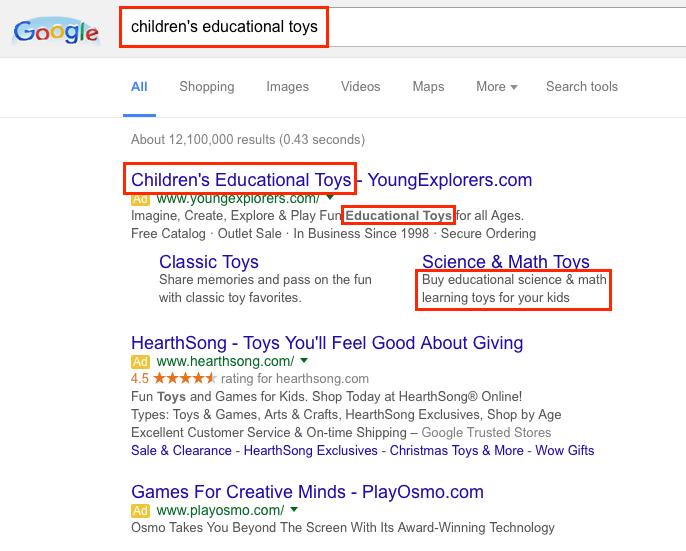
Responsive Ads
Dynamic Search Ads

This type of ad only requires you to provide creative descriptions. Google does the rest: they generate headlines and landing pages based on your website. It saves you time and keeps up to sync with advertisers’ websites. Google recommends this for brands with a large inventory or a well-developed website.
Call-Only Ads
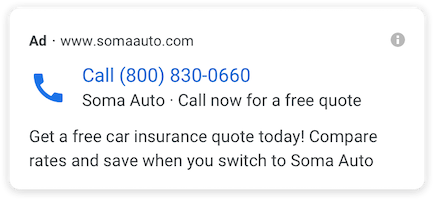
Shopping Ads
Display Ads
Microsoft vs Google Ads
Display Ads are visually-gripping banner ads, and come in the format of static images, GIFs, videos, etc. They are served in designated online ad spaces like websites, social media platforms, apps, and other channels. A Display Ad usually includes a primary image, ad copy, and a Call-To-Action (CTA) and directs the user to a landing page. Brands use Display Ads to:
- Build brand awareness
- Retarget audiences
- Drive website traffic, conversions and so much more
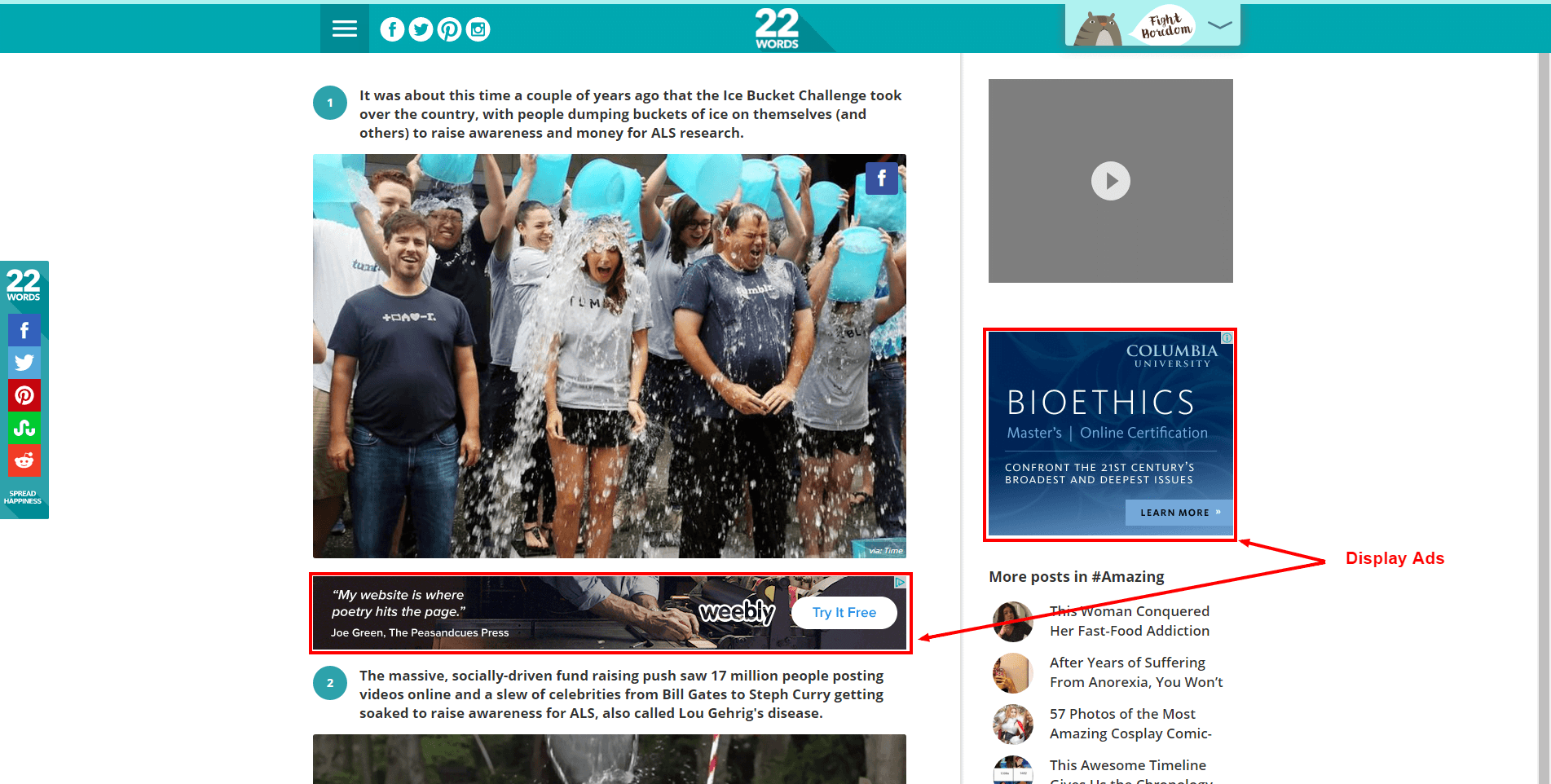
Microsoft Display Ads
- Microsoft Edge
- MSN
- Outlook
- Windows
- Xbox
Microsoft Audience Ads

These banner ads have contextual placements across websites. They are usually integrated into blogs, which offer users a seamless on-page experience.
Google Display Ads
Responsive Display Ads
Uploaded Image Ads
Engagement Ads
Gmail Ads
Shopping Ads:
Microsoft vs Google Ads
Here are three benefits of running Shopping Ads on both Bing and Google:
Stand Out From the Crowd
Shopping Ads show up at the top or sidebar of search results, which are optimal ad placement areas. Plus, visuals of your product make it pop.
Take Up more Real Estate
You could show up multiple times in search results. How? If your brand runs Shopping Ads in conjunction with Search Ads and has decent SEO, you could show up in the shopping ad section, the text ad AND organic search!
Set-Up is Easy as 1-2-3
You sync your eCommerce website with Google or Microsoft. Your product listings directly feed into the ad platforms!
Microsoft Shopping Ads
- Bing Shopping ads have a 45% higher Click-Through Rate (CTR) than Google.
- The average Cost-Per-Click (CPC) of Bing Shopping Ads is 30% lower than Google’s.
- Bing’s Shopping Ads’ average Cost-Per-Acquisition (CPA) is 40% lower than Google.
- The average Bing user spends 35% more when shopping online, versus on Google.
Google Shopping Ads
Product Shopping Ads have an image of the product, description, price, and the hyperlink directs users to your website.

Showcase Shopping Ads has the product image and description which expands when clicked on. It then showcases other related products on your website.

Pros & Cons: Microsoft Advertising vs Google Ads
Microsoft
Pros of Microsoft Advertising
- Aside from Microsoft Bing, you gain access to several different networks, including Yahoo and MSN.
- It captures an entire user base that Google can’t.
- Bing ads cost less than Google; they have an average lower Cost-Per-Click (CPC).
- Bing is great for targeting US audiences that are: older, blue-collar, and with higher income.
- Bing shows more ads at the top of the search results page, allowing people to find brands easier.
- There is less competition for desirable keywords.
Cons of Microsoft Advertising
- As the second-largest search engine in the world, Bing has a smaller market share.
- A smaller market share also means less traffic.
- Bing is predominantly used in the US, which means you’re less likely to reach international audiences.
Pros of Google Ads
- Google owns the largest market share in the search engine industry.
- Google has robust keyword tools for advertisers to explore and grow campaigns.
- The Google Display Network connects to over 2 million third-party sites. This means your ad reach is endless!
- Google Ads can complement your SEO efforts and amplify your presence in Google search results.
- Google Ads have strong retargeting capabilities.
- Google provides excellent data insights for advertisers to make optimizations.
Cons of Google Ads
- Competitive keywords can cost a lot but are not necessarily effective.
- Google Ad campaigns are complex, which will require a lot of time and hands-on management.
- Your budget can limit your campaign — once your dollars run out, your ads turn off.
Should I Use Microsoft or Google Ads?
Phew, we know that was a lot of information to take in. We hope the comparisons of Microsoft Advertising vs Google Ads can help you decide which one is right for your business!
When it comes to marketing, our approach is never to put all your eggs in one basket. A multi-pronged approach is ideal for reaching audiences across channels.
- So, if you plan to advertise in North America, we recommend running Google and Microsoft Ads concurrently.
- If you would like to break into the US market, Microsoft will make a difference in penetration into the middle-aged demographic.
- If you have a tighter budget and can only go with one platform, go with Google Ads. It offers more advertising options, and the audience reach is unparalleled.
Pay-Per-Click is in constant ebb and flow. Advertisers need to be on top of their game to monitor and adjust bids for optimization. It is time-consuming and can be a challenge if brands don’t have the time or familiarity with the platforms. For this reason, we recommend you consider working with an agency, who are Certified Ad Partners of Google and Microsoft can offer expertise.
Take War Room, for example. They plan and execute customized campaigns. Their experts make real-time adjustments to ensure the ads are always performing optimally. Then, they help identify opportunity gaps to improve your current and future campaigns.
An agency can take over the technical and complex parts of digital marketing, saving you time and wasted ad dollars. Plus, you get more time back in your day to focus on what you do best.
Whether you choose to go with one or both channels, Microsoft and Google can boost your online presence and drive conversions. Find a way to incorporate it into your advertising strategy today!
Additional Notes
According to a survey conducted by Passport Photo Online, social media is becoming
increasingly relevant in the “search wars”. People start turning to social media platforms to seek information – in fact, 84% of Americans claim that they’ve found information on social media they couldn’t find on Google at least once in their lifetime.
So, don’t overlook social media ads – they might just become a good option for you.
Here’s an in-depth look at more digital advertising channels. Find out what’s right for your brand and budget.
Contact us if you’re thinking of updating your paid digital strategy. We’d be happy to provide a recommendation!
Kick-Ass PPC Ads Start Here
Say hello to customized advertising strategies that convert.
Let’s talk strategy today!


